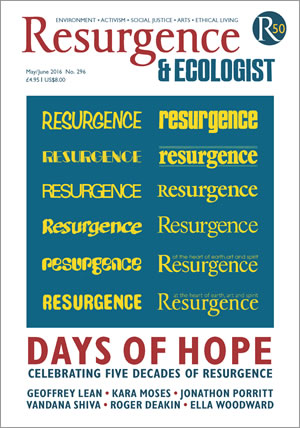In our secular and cynical age, ‘ritual’ is an awkward word. The associations it carries for many – of dusty religiosity, the effete New Age or sinister occultism, perhaps – are often obstructive. The mere mention of ritual can stop a conversation in its tracks or provoke outbreaks of eye-rolling. And yet, paradoxically, it is my experience that a latent hunger and affinity for ritual is universal. I have seen the action of ritual repeatedly irrigate the parched lands of even the most sceptical or trepidatious human soul.
Into this context William Ayot (a long-time mentor and men’s work colleague of mine) has birthed this important new book, in which he brings ritual in from the cold, restoring it to a rightful place at the heart of life and society. “A ritual”, he writes, “is a symbolic action through which we can give our soul, or psyche, an important message.”
This admirable attempt to define the almost indefinable points us to the central role of symbolism in ritual. That in turn explains the unique capacity of ritual to affect people regardless of attitude and experience. For it is through symbolic actions, objects and environments that ritual bypasses the sophisticated defences of the rational mind. Slipping thus below the mental radar, ritual has the power to land a lovingly transformative blow deep in the psyche.
The definition above also indicates the breadth of the territory of ritual. At one end of the spectrum, the simple lighting of a candle can have powerful impact, “as long as it has meaning for the one who lights it”. At the other, we find sophisticated transformational rituals such as those of the Dagara people of West Africa in which hours of drumming, dancing and visceral experience are enacted in complex ritual arenas with multiple fires, shrines and constructions. Between these poles lie acres of open ground populated by a panoply of ritual practice.
Part introductory how-to ritual guide, part autobiography, Ayot’s book offers first-hand accounts of a range of forms from the author’s experience. They range from the familiar weddings, funerals and pilgrimages to vision quests, rites of passage and ‘death lodges’, as well as rituals to help with endings – of relationships, jobs, or life phases – or to support transition to elderhood for retirees.
The account of one ritualist’s rejection of an ornate chalice in favour of Tupperware demonstrates that in ritual, intention is all. Trappings are secondary, and the dead weight of sanctimony must be lifted for a ritual to find authentic wings. In comparing the repository of sacred objects that is the humble mantelpiece to a ritual shrine, meanwhile, Ayot alerts us to the significance of practices we may already have. As he enables us to see and articulate these practices in a new way, bringing ritual into the front room or the boardroom, he clears the way to a potentially boundless enrichment of everyday life.
Ritual serves many purposes. It is about community building, access to deeper realms of self and purpose, and connection to the Earth and its cycles. This book demonstrates how ritual can foster connection, mark transitions, touch the sacred in ordinary life and support contemplation amidst the mania of the world. As existence zips by in a blur, ritual meets a longing for pause and presence. It creates the opportunity to step off the wheel into a realm where the rule of time is temporarily lifted. In the liminal space created, we can become available at last to whatever the moment and the mystery offer.







